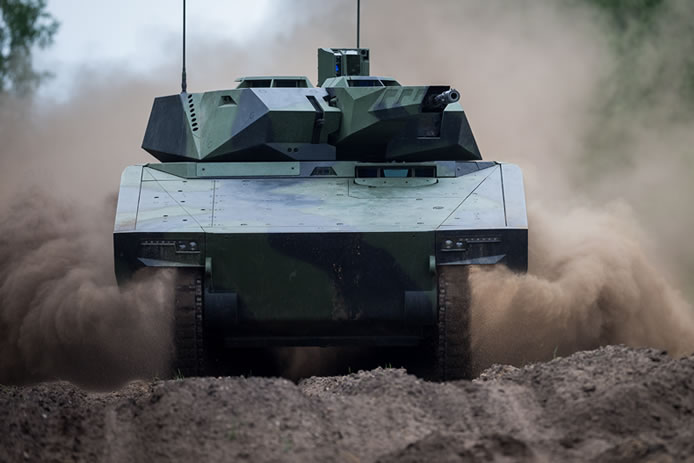Raytheon and Rheinmetall are joining forces for U.S. Army’s requirement for a Next-Generation Combat Vehicle (NGCV) based on the KF41 Lynx. They will participate in what is shaping up to be a competitive prototyping effort to replace the Bradley Infantry Fighting Vehicle with an Optionally Manned Fighting Vehicle. Developing a family of next-generation combat vehicles is a top priority of the U.S. Army as part of its modernization strategy focused on multi-domain operations. In fact, it’s the second highest priority, underneath bringing Long-Range Precision Fires into the force. The U.S. Army plans to follow a similar procurement route as it did with the Armored Multi-Purpose Vehicle and downselect to two competitors who will build 14 prototypes in an engineering and manufacturing development phase in the first quarter of fiscal 2020.

The Lynx Lynx Infantry Fighting Vehicle made its public debut in the springtime drizzle at a Parisian land warfare exposition in June this year. The Lynx KF41 with a Lance 2.0 turret rebalances the key requirements in the areas of survivability, mobility, lethality, capacity, adaptability and transportability is reconfigurable using open-architecture systems and a modular and open mechanical architecture. The vehicle design is “highly scalable,” with more than 18,000 kilos, or more than 39,000 pounds, of reconfigurable payload and an internal volume that allows for the turret and up to nine seats in the back.The Lynx Infantry Fighting Vehicle is fitted with an 850-kilowatt power pack that uses the Liebherr engine and Renk transmission.

From its protective hull to its counter-IED system to its LANCE 2.0 turret and 35mm automatic cannon, the Lynx vehicle’s ready-now, modular platform is equipped with full range of advanced systems. The turret has two flexible mission pods on either side, to allow customizable subsystems such as anti-tank guided missiles, non-line-of-sight loitering munitions, UAVs or an electronic warfare package. The Lynx can carry up to four TOW® missile, offering double the antitank missile capability than the existing Bradley. These same, flexible launchers can be used to launch other weapons or surveillance systems. The new vehicle is fitted with an 850-kilowatt power pack that uses the Liebherr engine and Renk transmission. Additionally, in order to power the digital backbone and all the other weapons systems, more than 20 kilowatts of electrical power is stored on board.

Raytheon will provide the third-generation FLIR, fielded on Abrams Main Battle Tanks and also meant for the Bradley A5 upgrade, which has since been canceled to make way for the OMFV. The company also plans to provide other sensor suites, particularly an active protection system that is already being developed and built to be compliant with the Army’s future APS system. While Rheinmetall has its own APS — the Active Defense System — that it’s been trying to break into the U.S. market as an interim solution for combat vehicles now, the company sees Raytheon’s APS offering as “unparalleled” and the plan is to incorporate the capability into the offering.















